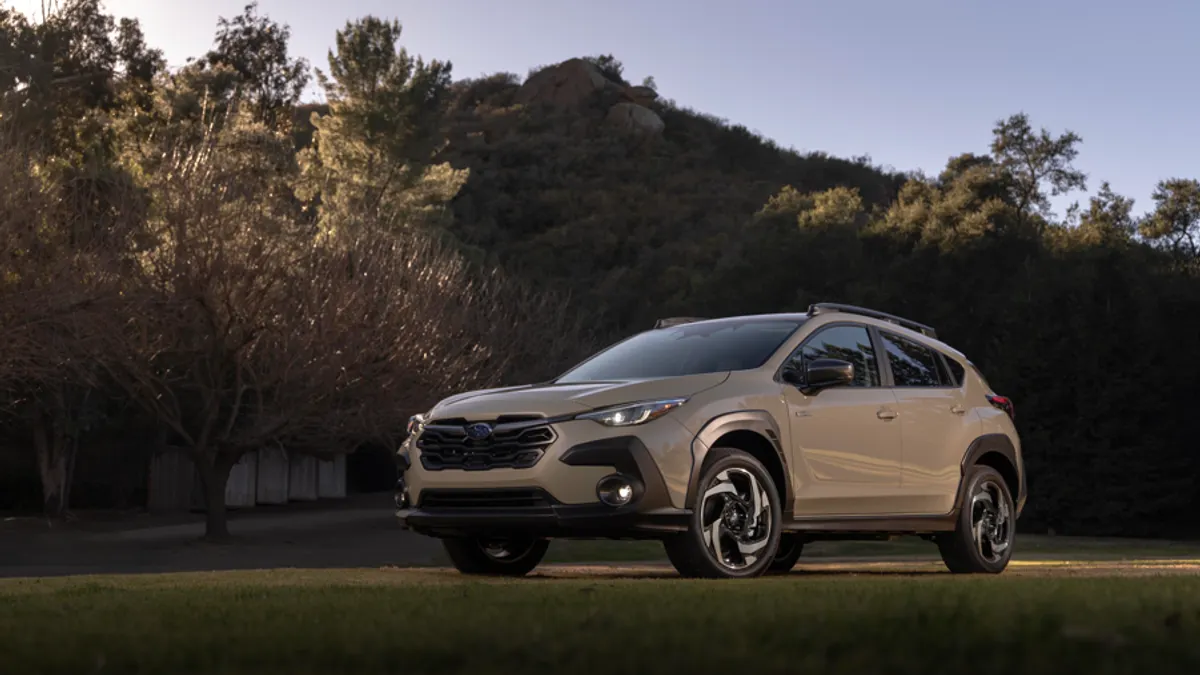Dive Brief:
- Subaru reported Q1 FY26 operating profits of 76.4 billion yen ($517 million), down 16.2% year over year, the automaker announced Aug. 7.
- U.S. tariffs, which began in the middle of the quarter, factored into its operating revenue decline.
- However, despite higher duties on vehicles and parts sent into the U.S. from Japan, Subaru’s quarterly sales grew by 25,000 units YoY to 171,000, driven primarily by the Forester and Crosstrek. “With regard to retail sales in the U.S., although demand trends have been volatile since the additional tariffs were imposed in April, sales remained firm in July,” CFO Shinsuke Toda said in the release.
Dive Insight:
The U.S. is a key market for Subaru, representing more than 70% of its total vehicle sales, according to President and CEO Atsushi Osaki.
While Osaki said the recently negotiated tariff deal with the U.S. that places a 15% duty on imports from Japan “alleviated some of the uncertainties surrounding the additional tariffs,” significant impacts remain.
Should the latest duty on Japanese imports hold, Osaki projects Subaru’s operating profits at 200 billion yen ($1.35 billion) for its fiscal year ending March 2026, a 50% ($2.7 billion) YoY decline.
But to hit that target, Osaki said Subaru will have to boost production and its sales mix, while also seeking ways to reduce costs.
Osaki said Subaru’s commitment to the U.S. has not changed, though the automaker shifted production of 2,000 units from the U.S. to Japan to offset Canadian duties on vehicles bound for that country.
Subaru is now focused on a plan to help the company adapt to rapidly changing business conditions, he said. The automaker will release additional details at a later date.
“Leveraging our company’s scale, we will continue making responsive and flexible management decisions as we explore investment strategies in Japan and the U.S. that will lead to Subaru’s sound and sustainable growth,” Osaki said.














